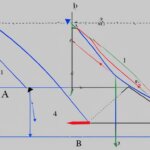Table of Contents
In the world of mathematics, understanding the terminology is essential for grasping the principles and concepts it encompasses. Whether you are a student, a teacher, or simply someone interested in expanding your knowledge, this section will provide a comprehensive guide to mathematical terms and their definitions. From the basics to the more complex, we will explore a wide range of terms that form the foundation of this discipline.
With these definitions at your fingertips, you will gain a deeper understanding of terms such as abacus, absolute value, acute angle, algebra, algorithm, and many more. No longer will you be puzzled by terms that might seem daunting at first. By breaking down each term and its meaning, we aim to make mathematical concepts accessible and understandable.
Whether you want to enhance your problem-solving skills or simply improve your numeracy, this guide will prove invaluable. Expand your mathematical vocabulary, improve your comprehension, and confidently tackle challenges in algebra, geometry, calculus, and beyond.
Stay tuned as we dive into the world of mathematical terms and their definitions. Let’s embark on this journey together, where numbers come alive, and calculations take on new meaning.
Arithmetic Terms and Definitions
Arithmetic, the fundamental branch of mathematics, deals with basic numerical operations and their properties. Understanding arithmetic terms is essential for building a solid foundation in math. This section provides definitions for key arithmetic terms that form the building blocks of mathematical operations.
Sum
The sum is the result of adding two or more numbers together. It represents the total of the values being combined.
Difference
The difference is the result of subtracting one number from another. It represents the numerical distance between the two values.
Product
The product is the result of multiplying two or more numbers. It represents the total value obtained by repeated addition.
Quotient
The quotient is the result of dividing one number by another. It represents the value obtained by the division process.
Factor
A factor is a number that divides another number evenly. It is a divisor of the given number.
Dividend
The dividend is the number that is being divided in a division problem. It is the value that is divided by the divisor.
Divisor
The divisor is the number by which the dividend is divided. It determines the number of equal parts the dividend is divided into.
| Term | Definition |
|---|---|
| Sum | The result of adding two or more numbers together. |
| Difference | The result of subtracting one number from another. |
| Product | The result of multiplying two or more numbers. |
| Quotient | The result of dividing one number by another. |
| Factor | A number that divides another number evenly. |
| Dividend | The number that is being divided in a division problem. |
| Divisor | The number by which the dividend is divided. |
Algebra, Geometry, and Calculus Terms
When it comes to mathematics, understanding key algebra, geometry, and calculus terms is essential. These terms lay the foundation for advanced mathematical concepts and play a fundamental role in various real-world applications.
In algebra, terms like equation, expression, variable, and coefficient are commonly used. An equation represents the equality of two expressions, while an expression is a combination of numbers, variables, and mathematical operations. Variables, represented by letters, can take on different values, and coefficients are the numbers multiplied by these variables.
Geometry introduces us to terms like line, angle, triangle, and circle. A line is a straight path that extends infinitely in both directions, while an angle is the measure of the space between two intersecting lines. Triangles, one of the basic shapes in geometry, have three sides and three angles. Circles, on the other hand, have a curved perimeter made up of points equidistant from the center.
Calculus brings us terms like derivative, integral, limit, and more. The derivative measures the rate of change of a function at a specific point, while an integral finds the area under a curve. Limits, in calculus, determine the behavior of a function as it approaches a certain value. These concepts form the basis for advanced mathematical analysis and have significant applications in physics, engineering, and economics.
FAQ
What is an abacus?
An abacus is a counting tool used for performing arithmetic calculations.
What is the absolute value?
The absolute value of a number is its distance from zero on a number line.
What is an acute angle?
An acute angle is an angle that measures less than 90 degrees.
What is algebra?
Algebra is a branch of mathematics that deals with symbols and the rules for manipulating those symbols to solve equations.
What is an algorithm?
An algorithm is a step-by-step procedure or formula for solving a problem or performing a task.
What is an angle?
An angle is the union of two rays with a common endpoint, known as the vertex.
What is area?
Area is the measure of the amount of space inside a two-dimensional shape.
What is an array?
An array is an ordered arrangement of objects, usually represented in rows and columns.
What is an attribute?
An attribute is a characteristic or property of an object or shape.
What is the average?
The average is the sum of all values in a set divided by the number of values in that set.
What is a base?
In mathematics, a base is the number that is raised to a power or the bottom side of a geometric shape.
What is a bar graph?
A bar graph is a graphical representation of data using rectangular bars.
What is BEDMAS or PEMDAS?
BEDMAS or PEMDAS is an acronym used to remember the order of operations in arithmetic: Brackets, Exponents, Division and Multiplication (from left to right), and Addition and Subtraction (from left to right).
What is a bell curve?
A bell curve, also known as a normal distribution, is a graph that represents a symmetric probability distribution of a variable.
What is a binomial?
In algebra, a binomial is an algebraic expression with two unlike terms separated by an addition or subtraction operator.
What is a box and whisker plot?
A box and whisker plot is a graphical representation of statistical data that shows the median, quartiles, and outliers.
What is calculus?
Calculus is a branch of mathematics that deals with rates of change and continuous motion.
What is capacity?
Capacity is the maximum amount that something can contain or hold.
What is a centimeter?
A centimeter is a unit of measurement equal to one hundredth of a meter.
What is circumference?
Circumference is the distance around the edge or boundary of a circle.
What is a chord?
A chord is a line segment whose endpoints lie on a circle.
What is a coefficient?
In algebra, a coefficient is a number or symbol that multiplies a variable or an unknown quantity.
What are common factors?
Common factors are numbers that divide evenly into two or more given numbers.
What are complementary angles?
Complementary angles are two angles whose sum is equal to 90 degrees.
What is a composite number?
A composite number is a positive integer that has at least one positive divisor other than one or itself.
What is a cone?
A cone is a three-dimensional geometric shape with a circular base and a pointed top.
What are conic sections?
Conic sections are curves formed by the intersection of a cone with a plane.
What is a constant?
In mathematics, a constant is a fixed value that does not change.
What is a coordinate?
A coordinate is a set of numbers that locate a point on a plane.
What does congruent mean?
In geometry, congruent means having the same shape and size.
What is cosine?
Cosine is a trigonometric function that represents the ratio of the adjacent side to the hypotenuse in a right-angled triangle.
What is a cylinder?
A cylinder is a three-dimensional geometric shape with two parallel circular bases connected by a curved surface.
What is a decagon?
A decagon is a polygon with ten sides.
What is a decimal?
A decimal is a number that consists of a whole number part and a fractional part separated by a decimal point.
What is a denominator?
In a fraction, the denominator is the number below the line that represents the total number of equal parts in the whole.
What is a degree?
A degree is a unit of measurement for angles, temperature, and geographic coordinates.
What is a diagonal?
A diagonal is a line segment that joins two nonadjacent vertices of a polygon.
What is a diameter?
The diameter is a line segment that passes through the center of a circle and has endpoints on the circumference.
What is the difference?
The difference is the result of subtracting one number from another.
What is a digit?
A digit is a numerical symbol used to represent numbers.
What is a dividend?
In division, the dividend is the number that is being divided.
What is a divisor?
In division, the divisor is the number by which the dividend is divided.
What is an edge?
An edge is a line segment where two faces of a polyhedron meet.
What is an ellipse?
An ellipse is a closed curve that is shaped like an elongated circle.
What is an endpoint?
An endpoint is a point at the extremity of a line segment or the starting point of a ray.
What does equilateral mean?
In geometry, equilateral means having all sides of equal length.
What is an equation?
An equation is a mathematical statement that says two expressions are equal.
What is an even number?
An even number is an integer that is divisible by 2.
What is an event?
In probability, an event is a set of outcomes of an experiment or situation.
What does it mean to evaluate?
To evaluate means to find the value or result of a mathematical expression or equation.
What is an exponent?
An exponent is a number that indicates how many times a base number is multiplied by itself.
What are expressions?
Expressions are mathematical phrases or combinations of numbers, variables, and operators.
What is a face?
In geometry, a face is a flat surface that forms part of the boundary of a solid shape.
What is a factor?
In multiplication, a factor is a number that is multiplied by another number to get a product.
What is factoring?
Factoring is the process of breaking down a number or algebraic expression into its factors.
What is factorial notation?
Factorial notation is a way to represent the product of all positive integers less than or equal to a given positive integer.
What is a factor tree?
A factor tree is a diagram that shows the prime factors of a number.
What is the Fibonacci sequence?
The Fibonacci sequence is a series of numbers where each number is the sum of the two preceding ones.
What is a figure?
A figure is a geometric shape or form.
What does finite mean?
In mathematics, finite means having bounds or limits.
What does it mean to flip?
To flip means to reflect or mirror an object or shape across a line.
What is a formula?
A formula is a mathematical rule or relationship expressed in symbols.
What is a fraction?
A fraction represents a part of a whole or a number that is not a whole number.
What is frequency?
Frequency is the number of occurrences of a repeating event per unit of time or space.
What is a furlong?
A furlong is a unit of measurement equal to one-eighth of a mile.
What is geometry?
Geometry is a branch of mathematics that deals with the properties, measurement, and relationships of points, lines, shapes, and spaces.
What is a graphing calculator?
A graphing calculator is a handheld device capable of plotting graphs, performing calculations, and solving equations.
What is graph theory?
Graph theory is a branch of mathematics that studies the properties of graphs, which consist of nodes or vertices connected by edges.
What is the greatest common factor?
The greatest common factor is the largest positive integer that divides evenly into two or more numbers.
What is a hexagon?
A hexagon is a polygon with six sides.
What is a histogram?
A histogram is a graphical representation of data that uses contiguous rectangles to represent the frequencies of a variable.
What is a hyperbola?
A hyperbola is a type of conic section that resembles two infinite intersecting curves.
What is the hypotenuse?
The hypotenuse is the longest side of a right-angled triangle, which is opposite the right angle.
What is an identity?
In mathematics, an identity is an equation that is true for all values of the variables.
What is an improper fraction?
An improper fraction is a fraction where the numerator is greater than or equal to the denominator.
What is an inequality?
An inequality is a mathematical statement that compares two values and indicates their relative size or relationship.
What are integers?
Integers are whole numbers, including both positive and negative numbers, as well as zero.
What does irrational mean?
In mathematics, irrational means not expressible as a ratio of two integers and not exactly representable as a decimal.
What does isosceles mean?
In geometry, isosceles means having two sides of equal length.
What is a kilometer?
A kilometer is a unit of measurement equal to one thousand meters.
What is a knot?
A knot is a unit of measurement equal to one nautical mile per hour.
What are like terms?
Like terms are terms that have the same variables raised to the same powers.
What are like fractions?
Like fractions are fractions that have the same denominator.
What is a line?
A line is a straight path that extends in both directions endlessly.
What is a line segment?
A line segment is a part of a line with two endpoints.
What is a linear equation?
A linear equation is an equation that represents a straight line when plotted on a graph.
What is the line of symmetry?
The line of symmetry is an imaginary line that divides a shape into two identical halves.
What is logic?
Logic is the study of reasoning and the rules and principles that govern valid inference and argumentation.
What is a logarithm?
A logarithm is the exponent to which a specified base must be raised to obtain a given number.
What is the mean?
The mean is the average of a set of numbers, calculated by summing all the values and dividing by the number of values.
What is the median?
The median is the middle value in a set of numbers when they are arranged in ascending or descending order.












